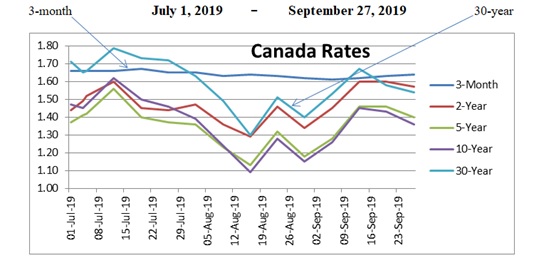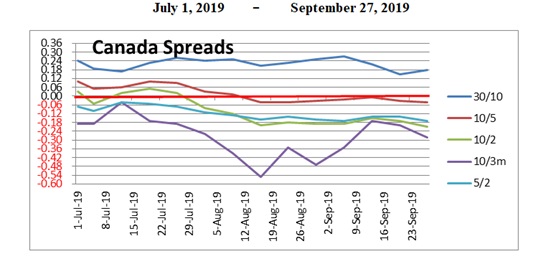We define an Economic Recession as being characterized by two consecutive quarters of negative GDP growth. That would mean that, to meet the first recessionary date of November 2020, Q2/2020 and Q3/2020 would have to experience negative GDP growth. To meet the April 2021 date, Q4/2020 and Q1/2021 would need to experience negative GDP growth. Between those dates, the other date scenario to define a recession is negative GDP growth in Q3/2020 and Q4/2020.
In our report this week, we provide charts for various interest rate maturities ranging between 3 months and 30 years. After having rebounded in the first half of September, interest rates across all the maturities are heading lower again.

We also look at the interest rate Spreads for various interest rate maturities. Spreads are steepening once again.

We monitor three key interest rate yield curve ratios, those being 10-year/2-year; 10-year/3-month; and 5-year/2-year ratios. Excluding the 30/10 and the 10/5, the remaining three strategic metrics, as shown in the chart above, are inverted, i.e., the longer-term maturity is yielding less than the shorter-term maturity. This all gives credence to our thinking that an Economic Recession could occur in Canada within the next two years despite the bullish economic signs currently prevalent.
You can read our comprehensive 7-page report by clicking the following link:
Recession Barometer 09-27-2019
//





